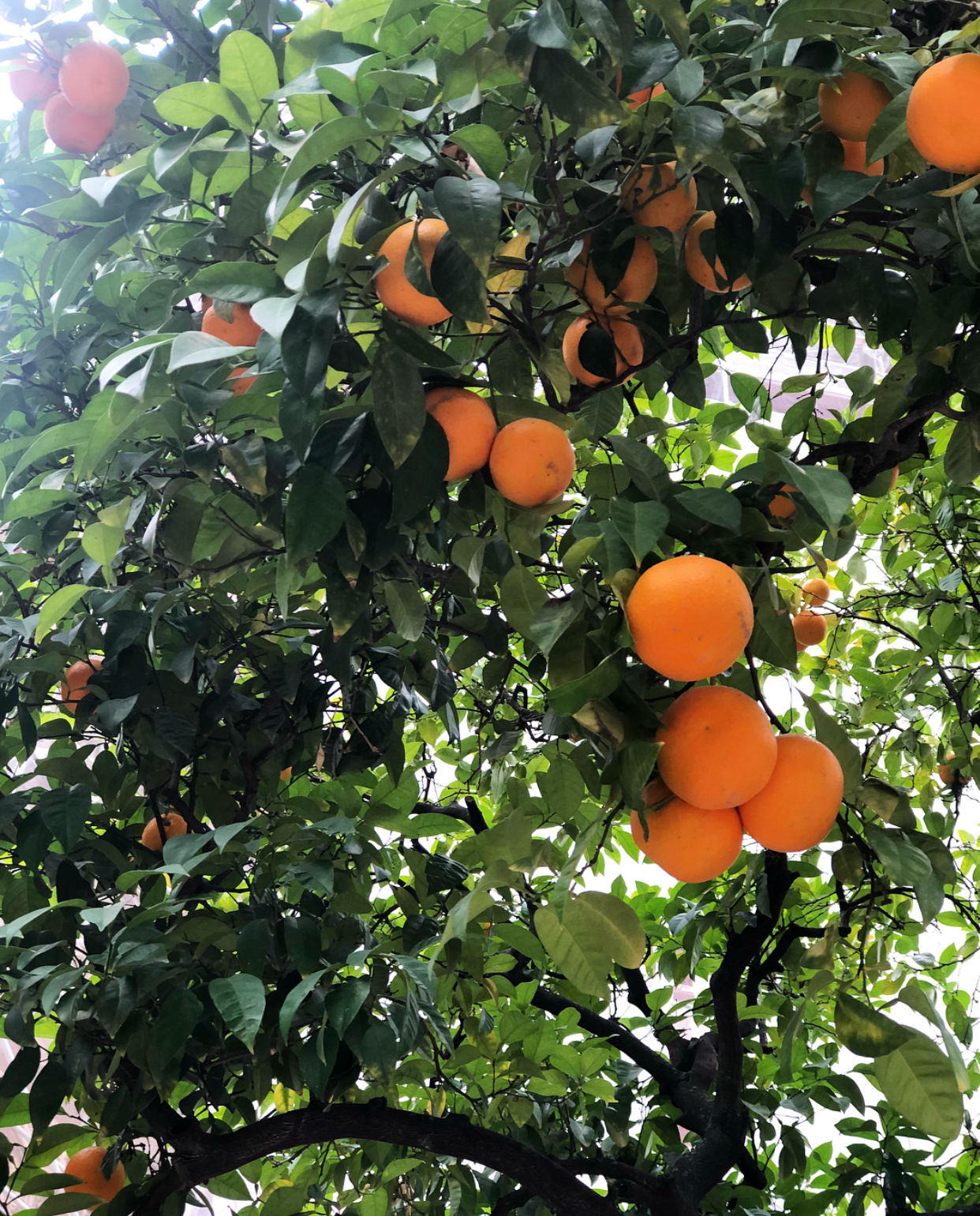Citrus Guide
It's the height of the season for citrus fruits, which means that farmers markets in the Sun Belt of the U.S. are bursting at the seams with these delicious snacks. If you live in citrus-producing areas, it's the perfect time to seek out local and organic varieties. In this post, I'll explain the ins and outs of my favorite citrus buddies to help you make the most of the season. Get your pucker faces ready.
Navel Oranges
This is the orange variety most people think of when they think "orange." These babies are large, round, seedless and have a little indent on one end that looks like an innie bellybutton (hence, "navel"). These aren't too hard to peel, which makes them great for snacking, as I'm sure you know. They grow in Florida, California, Texas and Arizona and are harvested November through June.
Cara Cara Oranges
Cara Cara oranges originated in Venezuela, but are commonly grown in California and harvested November through April. They are a variety of navel orange but are sweeter and slightly less tangy than your typical navel. Cara Caras also have pinkish flesh that could trick you into thinking they're a grapefruit, but don't be fooled: they're wayyyyy sweeter than grapefruits.
Blood Oranges
Blood oranges are the most metal of fruits, sporting a deep maroon, blood-colored interior. Like many of our citrus friends, blood oranges grow in California and are harvested December through April. They taste less acidic than navel oranges and are just slightly more bitter, but don't let the bitterness turn you off: these babies make a delicious snack (especially when candied and dipped in dark chocolate...).
Valencia Oranges
Named after Valencia, Spain but grown most often in Florida and Southern California, Valencia oranges should be your go-to fruit for juicing. They're sweeter and juicier than navels, but do contain seeds, which makes them slightly less snackable. These pups aren't in season until March through May, so you'll have to wait a few months before they hit their peak. Patience is a virtue when it comes to orange juicing.
Grapefruits
Grapefruits are huge, reddish on the inside and yellow on the outside. Their bitter flavor is more of an acquired taste than many of our other citrus pals on this list. Some people swear by the combo of grapefruit and salt, which brings out the sweetness of the fruit. If you're hesitant to try grapefruits, adding a dash of salt to your fruit might be a good gateway. In the U.S., grapefruits are grown in California, Florida, and Texas and are usually available from November through May.
Dekopon (aka Sumo Oranges)
This mandarin variety originated in Japan and has just recently been introduced to California. Dekopons looks like slightly misshapen navel oranges with rough, bumpy skin. They're much bigger than your typical mandarin orange and have super peelable skin and soft, uber-juicy insides. Be on the lookout for these under the label "Sumo Oranges" (named after their topknot appearance) in supermarkets February through May.
Clementines
Clementines are another variety of mandarin orange, commonly called "Cuties," "Sweeties" or "Halos," that are available November through January. After January, many companies use Murcotts rather than clementines but still refer to them as their traditional brand names. Murcotts are also a variety of mandarin but are slightly sweeter and juicier than clementines. Both clementines and Murcotts are dang easy to peel, so snack away.
Tangerines
Another mandarin subgroup, tangerines are slightly larger than clementines and slightly more tart, but they're just as easy to peel. They have seeds, so they’re slightly less snackable than clementines, but their juiciness makes the seeds totally worth it. Be on the lookout for these puppies October through January in California, Arizona, Texas and Florida.

